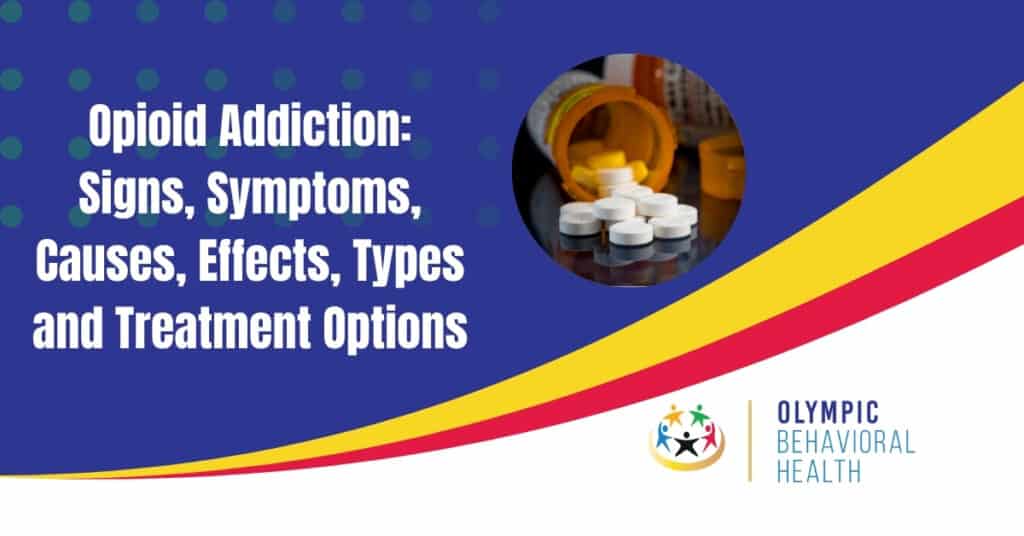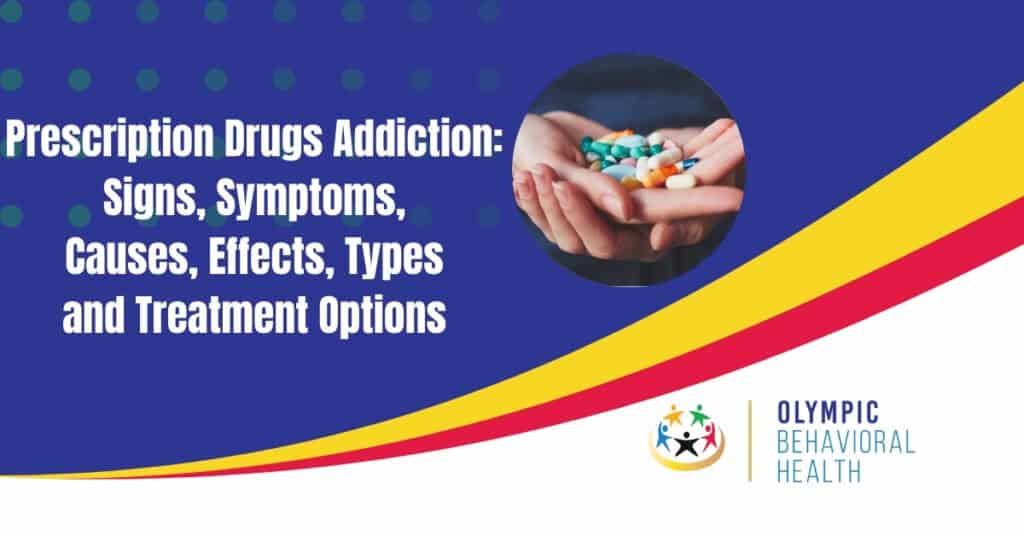Suboxone, a medication used in the treatment of opioid addiction, has gained considerable attention in recent years. Classified as a partial opioid agonist, Suboxone contains a combination of buprenorphine and naloxone. This medication has proven to be highly effective in managing withdrawal symptoms and reducing cravings, making it an essential tool in addiction recovery. In this article, we will delve into the uses, benefits, and potential side effects of Suboxone, shedding light on its role in supporting individuals on the path to recovery from opioid addiction.
Key takeaways:
- Suboxone is a medication used for opioid addiction treatment and pain management.
- Suboxone contains two main components: buprenorphine and naloxone.
- Suboxone is administered through film or tablet and undergoes different phases of treatment, including induction, stabilization, maintenance, and tapering off.
What is Suboxone?
Suboxone is a medication used to treat opioid addiction. It contains buprenorphine and naloxone. Buprenorphine activates the same receptors in the brain as opioids but with less intensity. Naloxone is an opioid antagonist that blocks the effects of opioids and can reverse an opioid overdose.
Suboxone is primarily used in medication-assisted treatment (MAT) programs for opioid addiction. It reduces cravings and withdrawal symptoms, allowing you to focus on recovery. Unlike other opioids, Suboxone can be taken once daily, making it more convenient.
People considering Suboxone should work closely with a healthcare professional specializing in addiction medicine. They can guide you through treatment and provide support. Following the prescribed dosage and treatment plan is important to maximize effectiveness.
Suboxone should only be used under medical supervision as part of a comprehensive treatment program that includes counseling and behavioral therapy. It is not a standalone solution for addiction but a tool to support recovery.
While Suboxone can be effective for many, it may not suit everyone. Factors such as medical history, current medications, and personal needs should be considered when determining treatment appropriateness.
How Does Suboxone Work?
Suboxone, a medication used to treat opioid addiction and pain, works by incorporating two active ingredients: buprenorphine and naloxone.
Buprenorphine, acting as a partial opioid agonist, binds to brain opioid receptors naturally and seamlessly, reducing cravings and withdrawal symptoms. Unlike full opioid agonists, it does not induce the same level of euphoria or respiratory depression. This attribute enables you to lessen the reliance on opioids gradually.
To prevent misuse, naloxone, an opioid antagonist, is added to Suboxone. When crushed or injected, naloxone counteracts the effects of buprenorphine, leading to withdrawal symptoms. This combination serves to block the impact of opioids and reverse overdoses.
When taken as directed, typically in the form of sublingual film or tablets, Suboxone is absorbed through the membranes in the mouth, enters the bloodstream, and eventually attaches to brain opioid receptors. This process stabilizes withdrawal symptoms and reduces drug cravings so you can prioritize your recovery journey.
Suboxone has long-acting effects that persist for 24 to 72 hours, making it conducive for maintenance treatment.
Suboxone should only be used under the supervision of an addiction medicine specialist. These professionals evaluate your needs and design a comprehensive treatment plan. Regular follow-up appointments and monitoring are imperative to ensure safety and effectiveness.
What Are the Components of Suboxone?
The components of Suboxone, buprenorphine, and naloxone work together to treat opioid addiction. Buprenorphine, the main active ingredient, reduces withdrawal symptoms and cravings associated with opioid addiction. Naloxone is in Suboxone to deter misuse or abuse of the medication by blocking the effects of opioids. When Suboxone is used as directed, the naloxone has little to no effect. However, if Suboxone is misused, the naloxone can cause withdrawal symptoms.
It is important to note that Suboxone should only be taken under the supervision of a healthcare professional. The dosage and administration of Suboxone should be closely monitored to ensure safe and effective treatment. Following the prescribed treatment plan is crucial for a successful recovery.
Understanding the components of Suboxone, buprenorphine, and naloxone helps you make informed decisions about their addiction treatment options. For personalized guidance and support in the treatment of opioid addiction, it is recommended to consult with a healthcare professional.
Uses and Benefits of Suboxone
You want to know more about the uses and benefits of Suboxone. Read on to learn how Suboxone us used in opioid addiction treatment. Suboxone can effectively manage pain, relieving those in need.
Suboxone for Opioid Addiction Treatment
It is a medication specifically designed for the treatment of opioid addiction. It is a combination of buprenorphine and naloxone. In this article, we will delve into the various benefits and effectiveness of Suboxone for managing opioid addiction.
One key advantage of Suboxone is its ability to reduce withdrawal symptoms. Opioid addiction often brings about severe withdrawal symptoms. By attaching to the same receptors in the brain that opioids bind to, Suboxone can help alleviate cravings and minimize withdrawal symptoms.
Furthermore, Suboxone plays a crucial role in preventing relapse. Not only does it help with withdrawal symptoms, but it also blocks the effects of opioids. This makes it less tempting to use opioids or experience their desired effects if they do succumb to temptation.
Another advantage of Suboxone is its long-lasting effects. Available in both film and tablet forms, Suboxone only needs to be taken once a day. This convenience ensures you can easily adhere to the treatment plan and reduce the risk of missing doses.
Additionally, Suboxone is effective in outpatient settings. Unlike other addiction treatment medications, Suboxone can be prescribed in an outpatient setting. This flexibility allows you to continue your day-to-day life and fulfill your responsibilities while receiving the necessary treatment.
Lastly, Suboxone is most effective as part of a comprehensive treatment approach. Alongside counseling and behavioral therapies, Suboxone addresses the underlying causes of addiction. This combined approach equips you with tools and support for long-term recovery.
Suboxone for Pain Management
A Comprehensive Approach to Treating Opioid Addiction and Pain
Suboxone, a medication primarily utilized for opioid addiction treatment, is also highly effective for managing pain. If you are considering Suboxone for pain management, here are some key points to keep in mind:
- Suboxone as a Viable Option: People with a history of opioid addiction or those currently undergoing addiction treatment can consider Suboxone a potential solution for pain management.
- Reduced Dependence: Suboxone contains buprenorphine, a partial opioid agonist, and naloxone, an opioid antagonist, which works in combination to reduce dependence on opioids while effectively managing pain.
- Demonstrated Efficacy: Numerous studies have shown that Suboxone is highly effective in managing pain for specific people. It offers relief for chronic conditions like back pain and neuropathic pain.
- Safety Considerations: It is crucial that Suboxone be prescribed and carefully monitored by experienced healthcare professionals to ensure proper dosage and minimize the risks of misuse.
- Individualized Approach: As each person’s pain management needs are unique, healthcare professionals thoroughly assess medical history, pain levels, and underlying conditions before considering Suboxone as part of a personalized treatment plan.
- Combined Therapy: Suboxone is often incorporated into a comprehensive pain management strategy, including physical therapy, cognitive-behavioral therapy, and non-opioid pain relievers. This multi-faceted approach ensures a more holistic and effective approach to addressing pain.
While Suboxone can be highly effective in managing pain, it is crucial to utilize it under the guidance of a healthcare professional. The decision to incorporate Suboxone into your pain management plan should be based on your circumstances and treatment goals. Open communication with your healthcare provider is essential for developing the most suitable and effective pain management plan.
Side Effects and Risks of Suboxone
Suboxone also has negative side effects and risks. From common side effects that may disrupt your well-being to potential risks and precautions that demand your attention, this section serves as your ultimate guide to understanding the not-so-glamorous aspects of suboxone. Review this medication to prepare yourself with what you need to make informed decisions about your health.
Common Side Effects of Suboxone
Common Side Effects of Suboxone can vary in severity and affect people differently. Here are some of the common side effects:
- Nausea: Suboxone can cause varying degrees of nausea, which may gradually improve over time.
- Headache: You may experience mild to moderate headaches while taking Suboxone.
- Insomnia: Difficulty sleeping, leading to daytime tiredness or fatigue, can result from Suboxone.
- Constipation: Constipation is a common side effect of Suboxone. Drinking enough water, consuming a fiber-rich diet, and maintaining regular physical activity can help alleviate this symptom.
- Sweating: Excessive sweating, particularly at night, is a frequent side effect of Suboxone. It often gets better over time.
- Loss of appetite: Suboxone can cause a decrease in appetite or loss of interest in food. Maintaining a healthy and balanced diet is important to ensure proper nutrition.
- Anxiety: Some people experience increased levels of anxiety while taking Suboxone. Tell your treatment provider about any mood or mental health changes.
It is important to note that not everyone will experience these common side effects, and additional side effects may occur. If you have any concerns about side effects or if they persist or become severe, consult a healthcare professional.
If you encounter any side effects while taking Suboxone, seek guidance and support from your healthcare provider. Call the staff at Olympic Behavioral Health at (561) 272-0800.
Potential Risks and Precautions
Carefully consider the potential risks and precautions when using Suboxone for safe and effective treatment. It is important to be aware of the following:
- Allergic reactions: Some people may be allergic to Suboxone, which can cause symptoms such as rash, itching, swelling, severe dizziness, or difficulty breathing. If any of these symptoms occur, immediate medical attention should be sought.
- Respiratory depression: Suboxone can slow or shallow breathing, especially when starting treatment or increasing the dosage. It is important to closely monitor for signs of respiratory depression and seek medical help if breathing difficulties arise.
- Overdose: You must adhere to the prescribed dosage of Suboxone strictly. Taking higher doses or combining it with other substances, particularly alcohol or benzodiazepines, can result in overdose and life-threatening complications.
- Drug interactions: Suboxone may interact with other medications, including certain antidepressants, antifungals, and HIV medications. Inform your healthcare provider about all your medications to minimize potential interactions.
- Pregnancy and breast-feeding: Exercise caution when using Suboxone during pregnancy. The potential risks to the fetus should be carefully considered against the benefits. Suboxone can also pass into breast milk, so it is important to discuss breastfeeding while using Suboxone with a healthcare professional.
- Withdrawal symptoms: Gradually reducing the dosage of Suboxone under medical supervision can help minimize discomfort when discontinuing treatment.
- Misuse and addiction: It is crucial to follow the prescribed treatment plan and not share Suboxone with others to prevent misuse and the risk of addiction.
Before starting Suboxone treatment, it is important to disclose your medical history, including any liver or kidney problems, respiratory disorders, or mental health conditions. Open communication with healthcare providers ensures they take appropriate precautions to minimize the potential risks of this therapy.
How Do Clinicians Dispense Suboxone?
Administering Suboxone involves different methods and techniques that are crucial to its effectiveness. In this section, we’ll examine the two main ways to use Suboxone: through film or tablet delivery and the process of induction and maintenance. We review how they give you Suboxone and how these methods contribute to its overall impact on addiction treatment. Read on to learn the aspects of Suboxone administration and its significance.
Suboxone Film or Tablet Administration
When administering Suboxone, two options are available: Suboxone film or tablet. Here are some important points to keep in mind:
- Suboxone Film: You put the dissolvable film under your tongue or inside the cheek. It has several strengths, including 2mg/0.5mg, 4mg/1mg, 8mg/2mg, and 12mg/3mg. It’s crucial to let the film dissolve naturally without chewing or swallowing.
- Suboxone Tablet: Similar to the film, tablets dissolve under your tongue. They are available in the same dosage strengths as the films. Remember not to chew or swallow the tablet.
- Administration Instructions: It is important to follow your healthcare professional’s instructions for both the film and tablet forms. These instructions cover dosage, frequency, and treatment duration.
- Effectiveness: Suboxone absorbs through the mucous membranes in the mouth, ensuring optimal effectiveness. This method allows the medication to enter the bloodstream directly.
- Adherence to Treatment: To maximize the benefits of Suboxone treatment, it is essential to stick to the prescribed administration method and dosage schedule. Skipping doses or changing the method can compromise its effectiveness.
- Patient Comfort: Patients find Suboxone films and tablets easy to administer and comfortable. The dissolvable forms eliminate the need for injections, making it a convenient option for opioid addiction treatment.
Remember, it is crucial only to use Suboxone under the guidance of a healthcare professional. Your doctor will determine the appropriate dosage and administration method based on your needs.
Suboxone Induction and Maintenance
Suboxone induction and maintenance are essential in treating opioid addiction.
During the induction phase, the patient starts Suboxone treatment after abstaining from opioid use for 12 to 24 hours. This ensures mild-to-moderate withdrawal, which is necessary for effective treatment. The initial dose may vary depending on addiction severity and individual characteristics.
After the initial dose, they closely monitor your response to Suboxone. The healthcare provider may adjust the dosage to achieve optimal results. Finding the right dosage is important for controlling withdrawal symptoms and cravings without causing sedation or adverse effects.
After adjusting your dosage and staying stable on Suboxone, you enter the stabilization phase. This involves maintaining a steady dose of Suboxone to support recovery. Regular check-ups and monitoring ensure treatment effectiveness and address any concerns.
Alongside Suboxone treatment, patients receive additional support through therapy and counseling. These interventions address addiction causes, develop coping skills, and promote long-term recovery. Combining medication-assisted treatment with psychosocial support is highly effective for opioid addiction.
At some point, the healthcare provider and patient may decide to reduce Suboxone dosage gradually to stop the medication. Tapering off requires careful planning, monitoring, and support to minimize relapse risk. The duration of tapering varies based on your needs.
Suboxone induction and maintenance are vital for the overall treatment of opioid addiction. The induction phase establishes the foundation, while the maintenance phase ensures stability and ongoing support. With the right dosage and supportive interventions, you can recover.
Suboxone Treatment Process
Navigating recovery with Suboxone involves a series of essential steps. The treatment process can be broken down into distinct phases, each serving a vital purpose. From the initial assessment and evaluation to the induction, stabilization, maintenance, and ultimately tapering off Suboxone, each sub-section offers a unique approach to ensure a successful recovery journey. So, let’s dive into the intricacies of the treatment process and understand how it can pave the way to a healthier and drug-free life.
Initial Assessment and Evaluation
During the initial assessment and evaluation process, healthcare professionals gather crucial information to determine the appropriate course of action for the patient. This involves carefully examining the patient’s medical history, substance abuse patterns, and overall physical and mental health.
- Medical History: The healthcare provider thoroughly assesses the patient’s medical history, including past illnesses, surgeries, or chronic conditions. This helps in identifying any contraindications or special considerations for Suboxone treatment.
- Substance Abuse Evaluation: The patient’s history of substance abuse undergoes a comprehensive evaluation. The healthcare provider collects detailed information about the type, duration, and frequency of opioid use and any previous attempts at quitting or seeking treatment. This is crucial in understanding the severity of the addiction and tailoring the treatment plan accordingly.
- Physical Examination: A complete physical examination assesses the patient’s health. The healthcare provider evaluates vital signs, neurological function, and any physical symptoms of opioid dependence or withdrawal.
- Mental Health Assessment: Evaluating the patient’s mental health is pivotal in developing a comprehensive treatment plan. The healthcare provider assesses the presence of co-occurring mental health disorders, such as depression or anxiety, that may require additional interventions alongside Suboxone treatment.
- Laboratory Tests: As part of the evaluation, laboratory tests may include urine screenings. Tests can confirm the presence of opioids and assess the patient’s overall health. These tests provide valuable information about the severity of opioid use and identify any potential co-occurring health issues.
- Treatment Preferences: The healthcare provider discusses with the patient to explore their treatment preferences and goals. They assess the patient’s readiness for change, motivations for seeking treatment, and any concerns or expectations about Suboxone therapy.
The healthcare provider develops a treatment plan that addresses the patient’s needs based on the gathered information. This plan may include Suboxone induction, followed by treatment stabilization and maintenance phases.
Induction Phase
The induction phase of Suboxone treatment is crucial helps to overcome opioid addiction. It encompasses several steps, starting with patient assessment. Before the induction phase, healthcare providers thoroughly evaluate the patient’s medical history, substance abuse patterns, and overall health to determine the appropriate dosage and treatment plan.
Withdrawal management is another essential aspect of the induction phase. If the patient is currently using opioids, they may need to undergo a period of opioid withdrawal before initiating Suboxone treatment. Medical professionals closely supervise this process to ensure safety and comfort.
Once the patient is in mild to moderate withdrawal, the healthcare provider administers the initial dose of Suboxone. The dosage matches the patient’s needs and may adjust during induction.
Monitoring is a crucial part of the induction phase. Healthcare professionals closely observe the patient’s response to the medication, manage withdrawal symptoms, and ensure their overall safety.
In addition to medication, Education and Counseling play a vital role in the induction phase. The patient receives comprehensive education and counseling on opioid addiction, the benefits and risks of Suboxone, coping strategies, and techniques for preventing relapse.
As part of this phase, they may refer you to support services, such as therapy or support groups, to provide additional assistance in your recovery.
Continued Monitoring is crucial throughout the Induction Phase. The healthcare provider continues to monitor the patient’s progress, adjusting the dosage if necessary and addressing any concerns or difficulties that may arise.
Once the patient has completed the induction and is stable on their Suboxone dosage, they transition to the stabilization phase of treatment. This phase focuses on maintaining recovery and preventing relapse.
Stabilization Phase
During the stabilization phase of Suboxone treatment, you go through important steps to effectively manage their opioid addiction. Here is a comprehensive list of the necessary steps during this phase:
- Continued Medication: You must take Suboxone as prescribed by your healthcare provider consistently. It’s a combination of buprenorphine and naloxone, which effectively reduce cravings and withdrawal symptoms.
- Dose Adjustment: Healthcare providers may adjust the dosage depending on your needs to ensure they administer the right amount. This helps find the optimal dose that effectively controls withdrawal symptoms and cravings.
- Ongoing Monitoring: During this phase, regular check-ups and appointments with healthcare providers are essential. These appointments allow providers to closely monitor progress, assess the response to the medication, and address any concerns or side effects.
- Therapeutic Support: In addition to medication, you may receive counseling, therapy, support groups, or other forms of therapy to tackle the psychological and emotional aspects of addiction.
- Lifestyle Changes: Making positive changes in one’s lifestyle is crucial during this phase. This may involve adopting healthy habits, exercising regularly, improving nutrition, and developing effective coping mechanisms to manage stress and triggers.
- Continued Education: You are strongly encouraged to educate yourself about addiction, recovery, and available resources. This knowledge empowers you to make informed decisions and actively participate in their treatment plans.
Throughout the stabilization phase, it is important to closely follow healthcare professionals’ guidance and strictly adhere to the prescribed treatment plan. This phase is the foundation for long-term recovery and enables you to achieve stability.
How Long is the Stabilization Phase?

It is crucial to remember that every person’s journey is unique, and the duration of the stabilization phase may vary depending on factors such as the severity of addiction and individual response to treatment. Therefore, it is essential to maintain patience, perseverance, and a strong support system during this phase.
By following these steps and engaging in a comprehensive treatment approach, you can significantly increase their chances of successful recovery and regain control of their lives during the stabilization phase of Suboxone treatment.
Maintenance Phase
The maintenance phase of Suboxone treatment plays a crucial role in the recovery process. This phase focuses on achieving long-term sobriety and acquiring the necessary skills to manage addiction without relying on opioids. The steps involved in the maintenance phase are as follows:
- Continuously adhere to the prescribed Suboxone regimen. It effectively reduces cravings and withdrawal symptoms, allowing you to concentrate on their recovery journey.
- Actively engage in counseling and therapy sessions. These sessions tackle the psychological and emotional factors related to addiction. They assist in developing effective coping mechanisms, identifying triggers, and working on relapse prevention strategies.
- Take part in support groups such as Narcotics Anonymous. These groups provide additional support and promote a sense of community. you can gather insights from others who have faced similar challenges, fostering mutual learning.
- Attend regular follow-up appointments with your healthcare provider to closely monitor progress, make necessary adjustments to medication, and address any concerns that may arise.
- Embrace positive lifestyle changes, including adopting a healthy diet, exercising regularly, and practicing stress management techniques. These changes contribute to overall well-being and greatly assist the recovery process.
Numerous studies have highlighted that people who complete the maintenance phase of Suboxone treatment are more likely to achieve long-term recovery compared to those who prematurely discontinue treatment. Following the recommended treatment plan, continuing therapy, and actively participating in support groups greatly enhance the chances of long-term success.
Tapering Off Suboxone
Tapering off Suboxone is an effective method to help people recover from opioid addiction. With the guidance of a healthcare professional, gradually reducing the dosage can minimize withdrawal symptoms and increase the likelihood of a successful transition to sobriety.
Steps to Taper Off Suboxone:
- Consultation with an addiction medicine specialist: It is essential to consult with a healthcare provider specializing in addiction medicine before initiating the tapering process. They will assess your circumstances and determine whether tapering off Suboxone suits you.
- Development of a personalized tapering plan: Your healthcare provider will work closely with you to create a plan tailored to your needs. They’ll consider factors such as the duration of use, dosage, and overall health. The plan will include precise instructions for gradually reducing the dosage.
- Adherence to the tapering schedule: Strictly following the schedule provided by your healthcare provider is crucial. The dosage should gradually decrease, typically over weeks or months.
- Ongoing communication with your healthcare provider: Regular communication with your healthcare provider throughout the tapering process is important. They will monitor your progress, evaluate any withdrawal symptoms or challenges you may face, and adjust the plan.
- Management of withdrawal symptoms: As the dosage of Suboxone reduces, you may experience withdrawal symptoms. Your healthcare provider may recommend medications or therapies to help manage these symptoms and ensure comfort during tapering.
- Continued support and counseling: Tapering off Suboxone is just one step in your recovery journey. It is crucial to continue engaging in support groups, counseling, or therapy to address the underlying causes of addiction and develop effective coping mechanisms for successful recovery.
Tapering off Suboxone requires patience, commitment, and a strong support system. By following the prescribed plan and seeking the necessary support, you can successfully navigate this stage of recovery and achieve long-term sobriety. The Olympic Behavioral Health medication assisted treatment program in West Palm Beach, FL, supports you throughout this process. Contact us at (561) 272-0800 to learn more.
Some Facts About What is Suboxone:
- ✅ Suboxone is a medication that treats opioid addiction.
- ✅ It is a combination of two drugs, buprenorphine and naloxone.
- ✅ Suboxone is an opioid antagonist. It blocks opioid effects on the nervous system.
- ✅ Compared to methadone, it is less habit-forming with fewer side effects.
- ✅ Suboxone should combine with substance abuse therapy and regular primary care.
Frequently Asked Questions
What is Suboxone?
Suboxone is a medication that treats opioid addiction. It contains a combination of two drugs, buprenorphine, and naloxone, which work together to reduce withdrawal symptoms and dependence on opioids.
How does Suboxone work?
Suboxone works by blocking the effects of other opioids and preventing a person from feeling high. Buprenorphine, one of the medications, acts as a partial agonist. In contrast, naloxone acts as an opioid antagonist to block and reverse the effects of opioids on the nervous system.
Is Suboxone addictive?
Suboxone has minimal potential for addiction due to its slow onset and mild effects. It is safe for long-term use and can help with addiction recovery. However, it is important to take Suboxone exactly as prescribed and under the guidance of a healthcare provider to avoid misuse and dependence.
Are there alternative medications for opioid addiction treatment?
Yes, there are alternative drugs available to treat opioid use disorder, such as buprenorphine, lofexidine, methadone, and naltrexone. Consult addiction treatment specialists to determine the choice of medication based on individual needs and goals.
What are the side effects of Suboxone?
Common side effects of Suboxone include dizziness, drowsiness, nausea, constipation, and sleep problems. Serious side effects can occur, including respiratory distress, overdose, adrenal insufficiency, dependence, withdrawal, and neonatal abstinence syndrome. It is important to promptly inform a healthcare provider of any side effects experienced while taking Suboxone.

Share This Post


